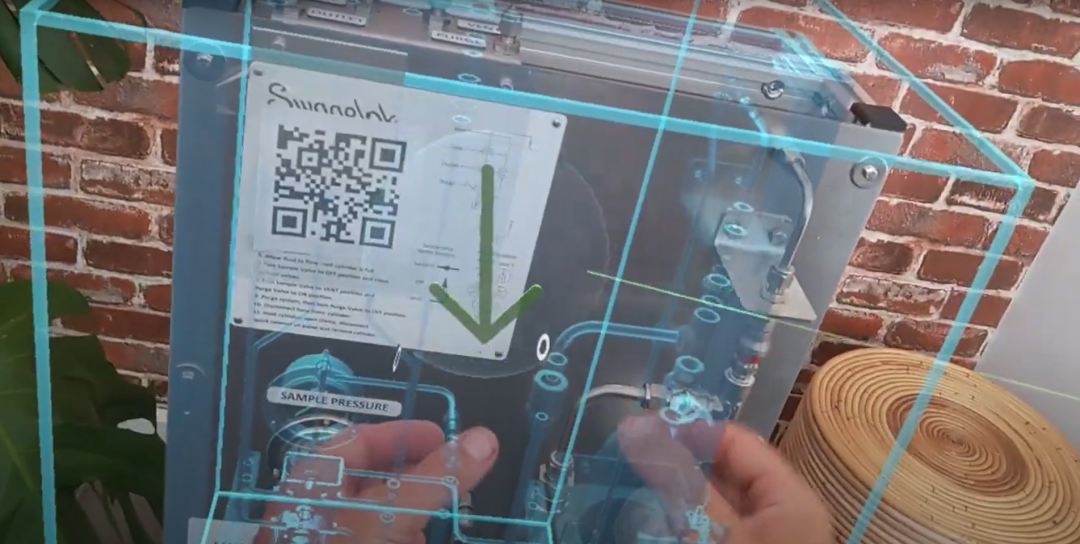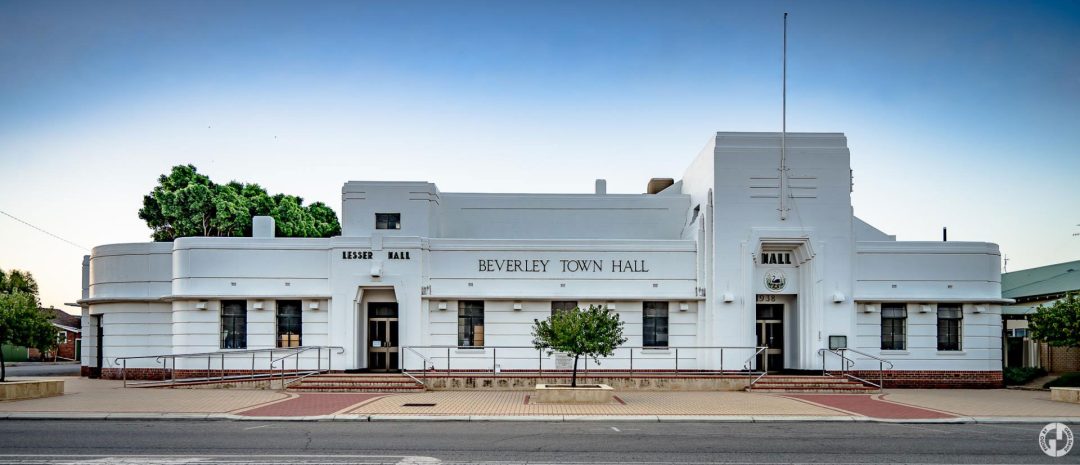Augmented Reality (AR) Adelaide
We are an Adelaide AR studio specialising in building AR applications for mobile, web & headsets. Give our Adelaide AR studio a call today to start brainstorming your ideas.

AR Development
Imagine being able to walk around your apartment in Glenelg seeing different furniture and a new colour scheme. Or showing investors how your Unley development will look in the real world before it is built. These are just two examples of the power of augmented reality, or AR, for the real estate, property development and construction industries. But the applications and possibilities of augmented reality in Adelaide and South Australia spread much further and wider than that.
Slowly but surely Adelaide businesses are starting to realise the potential of augmented reality and it is beginning to revolutionise the way we all do business. Major corporate players such as Amazon and Facebook are dipping their toes in the augmented reality waters and are exploring its potential. But you don’t need a budget in the billions and an army of tech wizards to harness the power of augmented reality. It can also be used at a much lower scale, but the technology can be just as game changing. Keep reading to find out more about what augmented reality is, how it is created and some examples of how it is being used in industries across Adelaide and South Australia.
What industry is your business wanting to use AR in?
What are the benefits of Augmented Reality for your business in Adelaide?
AR engages customers and boosts interest in your business
Keep up with your competitors in Adelaide, SA and beyond
Embrace the metaverse and demonstrate your commitment to cutting-edge technology in South Australia
Demonstrate your products to customers across Australia in digital showrooms
Reduce return rates and improve profit margins for your company
Allow customers to ‘try before they buy’ with augmented reality technology
Train staff members in safe, simulated environments using AR
Support product design and development with AR testing and quality assurance
Offer superior services to customers via AR customer support and 3D modelling
Encourage customers to share their AR screenshots on social media
What is augmented reality?
Augmented reality blurs the lines between the physical and digital world. It stems from the idea of immersing a user into a digital environment. However, unlike virtual reality which aims for a complete immersive experience, augmented reality only partly overlays virtual objects into the real world. It uses everyday devices like smartphones and tablets with inbuilt sensors to detect the position of objects and then determine where to put the virtual ones. So, you can see your choice or furniture in an empty flat, or how an interior design renovation would improve a building overlooking the River Torrens.
The technology is still in its infancy but the concept of augmented reality has actually been around since the late 90s. Initially, six core uses were identified including medical visualisation, maintenance and repair, annotation, robot path planning, entertainment and military uses. Some of these areas are much further down the path of development than others.
While there is a long way to go before augmented reality reaches its full potential, especially in areas such as medicine, the changes are beginning to happen. It won’t belong before doctors in the Royal Adelaide are using augmented reality to help patients visualise procedures and using it for surgical purposes and training.
However, back in the present day, augmented reality already has multiple uses in South Australia. It is very appealing to businesses because unlike virtual reality it requires no specialist equipment and uses existing devices. It can help the user have a more enjoyable, immersive and memorable experience. Augmented reality is also useful for creating personalised content that enhances an interactive customer journey. These kind of improvements will increase sales and improve customer retention.
How is AR created?
Augmented reality technology works by using existing objects to trigger computer generated enhancements, displayed over the top of reality and in real time. These images typically take the shape of 3D models, as well as videos and animations. It aims to expand the physical world by connecting these digital animations to a special marker, with the help of GPS to pinpoint its exact location.
The main processes are sensory, processing, projecting and reflecting. It can be displayed on various screens and handheld devices, as well as head mounted displays. That’s the real beauty of augmented reality – you don’t have to use expensive equipment in order to make it work. It can be used with existing technologies that most of us already own.
What are the industry use case studies for AR?
Augmented reality has practical applications in a range of industries in South Australia. For example, in retail you can choose between in store and out of store immersive augmented experiences. This means you can allow customers to use augmented reality inside the store such as in the fitting room, or you can allow them to do this from the comfort of their own home.
The Converse Sample app is a great example, allowing customers to see how they would look in a choice of their sneakers. Ikea Place allows you to see what their assembled furniture would look like in your home and it doesn’t matter whether that is in Semaphore, Silver Sands or Sweden! And Dulux Paint use an AR app to allow you to try out paint colours.
Both real estate and interior design can make good use of augmented reality technology. They allow potential buyers to experience property in North Brighton or Henley Beach in a more immersive way. Interior designers can visualise their creations in an interactive space or allow customers to ‘try out’ a design or style throughout Adelaide and South Australia.
There are also applications for augmented reality technology in tourism, in terms of augmented map apps, as well as training and education. If you would like to know more about how augmented reality could benefit your Adelaide or South Australia business, then get in touch with our team here at 3D Walkabout.

Get an Instant Quote on 1800 418 398
If you’d like to receive our full ‘Augmented Reality for Businesses Information Pack & Price List‘ please add your details below.
AR Case Studies
Frequently Asked Questions
Is Snapchat AR or MR?
Snapchat operates within the AR space. By overlaying virtual elements over a user’s real-world experience with the help of innovative hardware, Snapchat offers unique, innovative opportunities for user engagement and digital collaboration.
What is Snap augmented reality?
Snap AR functions on CGI images placed over a user’s field of view. By determining key visual points, such as the sky, horizon or surrounding objects, Snapchat forms a detailed map of the user’s location. This technology transforms the user experience, allowing them to interact with the digital world through the convenience of a wearable device.
Which Samsung phone has AR?
The Galaxy S20 comes complete with AR features offered through its AR Zone. Users can create lifelike emojis and stickers, record videos with virtual handwriting, capture and edit photos and videos, and easily measure size and distance of their surroundings.
Is Samsung working on AR glasses?
Yes. According to reports, Samsung is working on its own AR device. These glasses are believed to allow users to wear a projected keyboard, enter a full-body virtual meeting, and simulate a virtual environment with ease.
Is HoloLens MR or AR?
The HoloLens is an MR system. The system still suits AR business requirements, as the difference between AR and MR is relatively minor, encompassing the use of third-party devices such as a phone for displaying information.
Is HoloLens 2 VR or AR?
Hololens 2 is an AR system, with AR glasses differing from virtual reality headsets in one key way. A VR headset blocks out the world around the viewer, leaving only the view of the metaverse and graphical environment around them. Augmented reality glasses, meanwhile, are see-through and mean that people can see both the real world and the virtual landscape.
How do I use Google augmented reality?
If you’re passionate about AR, Google’s got a lot on offer. You can search with your camera using Google Lens, place 3D objects in your space with AR Google Search, enjoy a Live View in Google Maps, and even develop your own apps with ARCore.
Is Apple making augmented reality glasses?
If the rumours are true, Apple is working on developing AR glasses that go beyond the MR headset slated for 2023. Apple Glass is said to allow users to interact with digital information and objects through transparent wearables. It’s also rumoured to contain prescription lenses so that regular glasses wearers can enjoy the benefits of AR.
When did Amazon start using augmented reality?
Amazon first started using AR in 2017, with the launch of Amazon AR view and Room Decorator. Amazon XR is currently tentatively in development, although details remain scarce at present. Amazon is expected to fully enter the extended reality market in 2023.
When did Amazon start using augmented reality?
Amazon first started using AR in 2017, with the launch of Amazon AR view and Room Decorator. Amazon XR is currently tentatively in development, although details remain scarce at present. Amazon is expected to fully enter the extended reality market in 2023.
How does Amazon use augmented reality?
Amazon currently allows shoppers to liaise with AR brands to place digital products in the home. This helps consumers to assess if things like the colour or size of an item will work in a room. However, Amazon is expected to grow its Amazon VR and Amazon AR business models further in the near future.
How do I use Google augmented reality?
If you’re passionate about AR, Google’s got a lot on offer. You can search with your camera using Google Lens, place 3D objects in your space with AR Google Search, enjoy a Live View in Google Maps, and even develop your own apps with ARCore.
Is Snapchat AR or MR?
Snapchat operates within the AR space. By overlaying virtual elements over a user’s real-world experience with the help of innovative hardware, Snapchat offers unique, innovative opportunities for user engagement and digital collaboration.
What is Snap augmented reality?
Snap AR functions on CGI images placed over a user’s field of view. By determining key visual points, such as the sky, horizon or surrounding objects, Snapchat forms a detailed map of the user’s location. This technology transforms the user experience, allowing them to interact with the digital world through the convenience of a wearable device.
Is mixed reality the future of AR & VR?
Yes. Mixed reality takes the best features of AR and VR and blends them into an incredible user experience. Users can interact with the physical and virtual world seamlessly, with MR replicating their natural behaviour and changes in perspectives. This goes beyond the traditional approaches of VR and AR, which place users within a space or overlay the physical world with additional information.
What is fuelling the growth of AR?
The main trend fuelling the growth of augmented reality is the increased development of smartphone and tablet applications. Initiatives such as ARKit from Apple mean that AR and VR are widely available. Awareness of the capability of the technology is growing, along with an understanding of its value across almost every business and industry sector.



